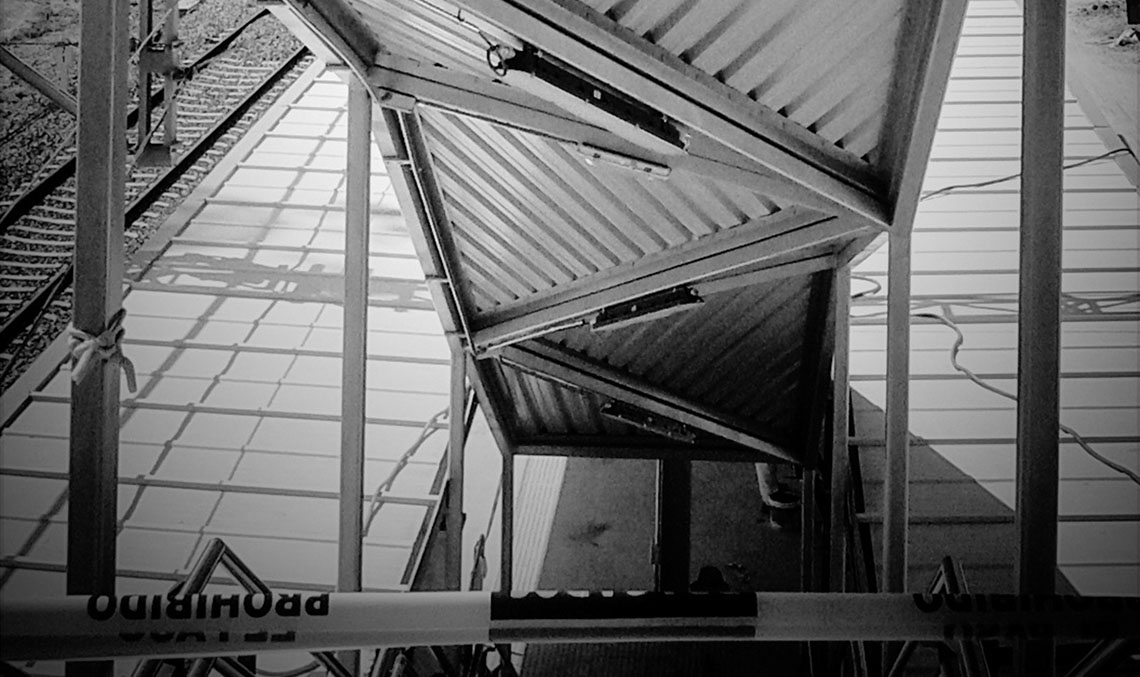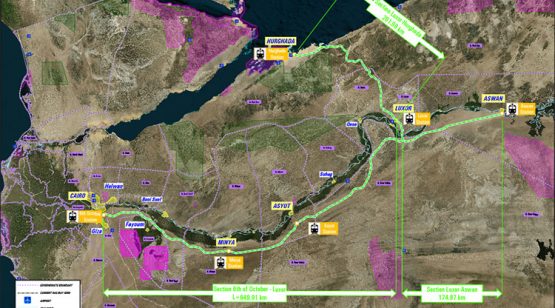The train halt owes its name to the new Los Jardines de Hércules development, a collection of 2,000 dwellings recently built 9 kilometres to the south of Seville. With the entry into service of this station of line C1, located on the Seville-Cádiz railway line, users can now reach the centre of Seville in just 10 minutes.
The new facilities are located to the north of the former La Salud station, and 120 commuter trains of C1 and C5 lines serve it every day, favouring fluid and rapid communication with Seville centre, from whose station –Sevilla-Santa Justa– travellers can link up with the rest of Renfe services (commuter railway lines, medium-distance trains and AVE).
Ineco carried out the drafting of the building project and all of the works inherent in the management of the works and coordination of health and safety, which include the elements of the raised station and its access, the zone of shelters and platforms and the technical services building. Its peculiar design, which places the accesses and the hall of the station on a walkway in the shape of an irregular spatial tube, has required complex execution and management work. Thanks to its such unique geometry we were able to not modify the course of the railway line or its basic infrastructure, which allowed us to maintain the continual service of passengers and freight throughout the whole execution of the train halt.
Access to the hall is gained through automatic doors with a remote control mechanism and it is fitted with air conditioning. The hall contains self-service ticket machines, access control turning machines of a special width and the furniture and signage. The starting state for its design involves very limiting environmental conditions in relation to an already pre-determined structure, shape, dimensions and opacities. From this regular structure, the “game” of dislocating its structural joints begins, both vertically and horizontally, until a balance of the whole is achieved, resulting in an irregular structural frame, faceted in triangles.
Ineco has carried out the drafting of the building project and the works inherent in the management of the works and coordination of health and safety and management
This peculiar geometry of the walkway is developed along a transverse axis on the train tracks. The space has a closed and covered area –where the hall is located– and another open and covered zone, that leads to the access disembarkation area and the connection with the two platforms. As such, it has an uneven geometric shape, wider in the zone of the hall. The walkway is supported vertically on the masts of the lifts and on the intermediate pillars. These masts are also the horizontal supports of the structure for the loads of wind and earthquakes.
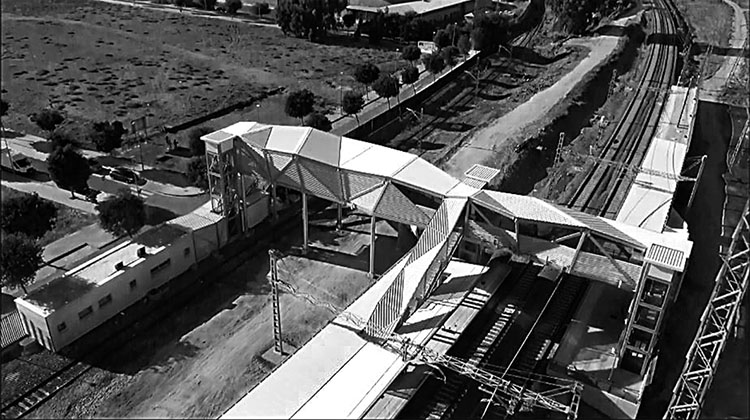
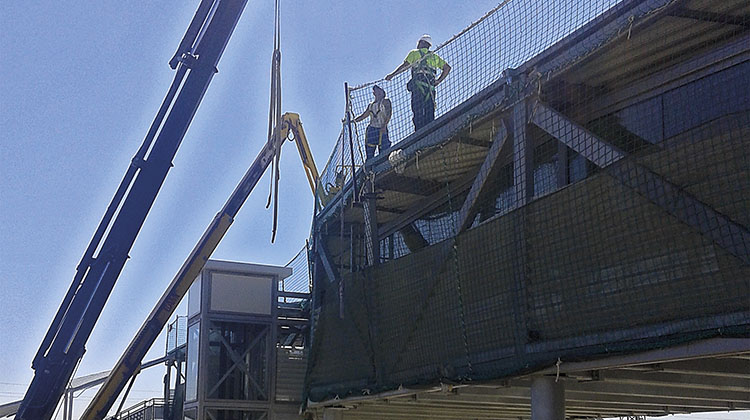
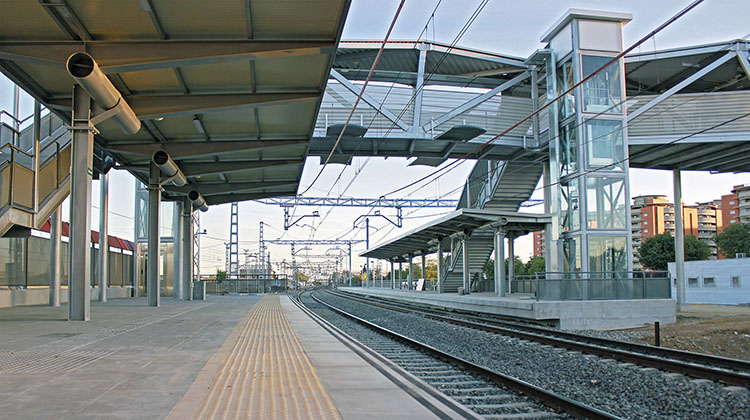
The work flow was carried out using a BIM model that, initially, served as a design tool with great speed in the execution of different design alternatives, subsequently to help external consultants in the calculation and dimensioning of the structure and, lastly, for the building development and its documentation. This BIM model was carried out with the Revit programme, taking advantage of the experience of the company in BIM until that date (new Odessa international airport, Elche station, etc.), which facilitated the idea of the design and its development in a very short space of time, just two months. The design and definition of such a complex volume in such a short space of time was possible thanks to the use of a BIM tool.
The design and definition of such a complex volume in such a short space of time was possible thanks to the use of a BIM tool
The lateral sides and roof of the walkway have diagonals and, as such, they function like lattices with elements working mainly through traction-compression. The lower side, having had to resolve both the structure of the floor and the overall bending behaviour, was resolved with parallel elements together, quasi perpendicular to the lower cords, forming an irregular Vierendeel beam. The structure of the slabs of the walkway floor was developed with a concrete slab on a corrugated sheet, which functions as lost formwork. The structure of the masts of the lifts consists of a spatial lattice formed by tubular elements of square section. It resists the loads of the lift itself, as well as those that the walkway transmits.
In accesses, walkways and disembarkation areas, mobility-accessible solutions have been installed in their finishes with the inclusion of tactile routing in accordance with the legislation in force and technical specifications of Renfe.
EXPERIENCE IN BIM
Ineco has worked for years on developing projects in the BIM (Building Information Modelling) environment, from the carrying out of simple works such as for this station, designed with the Revit tool, to large and complex projects and airport building works, line, rail and building projects. Amongst its many advantages, the work with BIM tools allows, in each project, the total integration of the architecture, the structure and the facilities; it also offers different alternatives of materials, designs and finishes, calculation of its costs, simulations of its construction to be carried out including security and health, and to opt for the best technical and aesthetic solution in a very quick period of time and in a collaborative environment. From the start of the project to the execution of works and its subsequent maintenance, the access of all professionals involved in the latest version and its history facilitates the coordination of disciplines, conflict solution and its proper budgetary management.
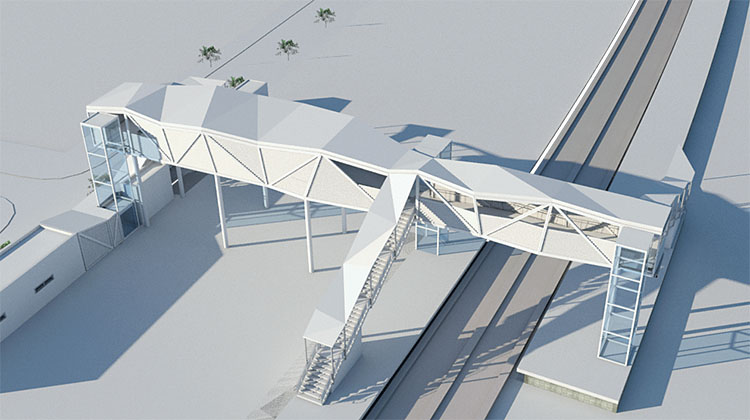
DESIGNED WITH REVIT.
The volumetric and structural irregularity of the walkway, as well as its various alternatives, were studied thanks to its modelling in Revit, which, in turn, allowed us to react very quickly in the event of changes and unforeseen events in the project.
COMPLEX WORKS WITHOUT INTERRUPTIONS IN THE RAILWAY SERVICE
- Mechanisation of the walkway model to allow the transportation of the whole structure to the work zone in the segments of a greater dimension.
- Subsequent assembly of the sections planned, to be lifted as independent units.
- Lifting of the first section to the general tracks, of 20 metres in length at a height of 7.50 metres above the track, through two large tonnage cranes.
- Lifting of the second section to the track of the port of 29 metres in length, at the same seat level, through two large tonnage cranes
- The joining of both sections, implementation of reinforcements and execution of slabs for passage.
PROJECTS IN WHICH INECO HAS WORKED WITH BIM
- Terminal building of Odessa airport, Ukraine.
- Implementation of the new terminal building of the Abu Dhabi airport.
- Enlargement of the check-in area of Sal Island airport, Cape Verde.
- Enlargement of the terminal of Boavista airport, Cape Verde.
- Terminal and RFFS of San Nicolás airport, Cape Verde.
- Delta Junction, high-speed line (HS2) between London and Birmingham, the United Kingdom.
- Terminal building of Simferopol international airport, Russia.
- New international terminal and refurbishment of the existing terminal in Alfonso Bonilla airport, Colombia.
- Cargo terminal of Boavista Island, Cape Verde.
- Controller booth in Ibiza airport, Spain.
- New Elche high-speed station, Spain.
- Remodelling of San Bernardo station, Seville, Spain.
- New hall of Barakaldo station, Spain.
- New Urbinaga interchange, Bilbao, Spain.
- New passenger building of Torredembarra station, Spain.
- Torrelavega station, Spain.
- Cali airport, Colombia
- Radar building. Alicante airport, Spain.
- Hangars. Córdoba airport, Spain.
- Weather radar. Tenerife, Spain.
- Falconry of A Coruña airport, Spain.
- Proposal of the new ASA headquarters, Cape Verde.
- New firefighter building in Ibiza airport, Spain.
- Enclosure of Sants station, Spain.
- San Andreu Comtal station, Barcelona, Spain.
- Antequera station, Spain.
- Master Plan of the new international airport of the Salah Aldeen region, Iraq.
- Development of regional airports of Brazil.
- Control box of León airport, Spain.
- Northern access to the terminal building of Gibraltar airport, Spain.
- Operations on the Departure floor of Lanzarote airport, Spain.
- Remodelling of the shopping zones of Chamartín station, Madrid, Spain.


